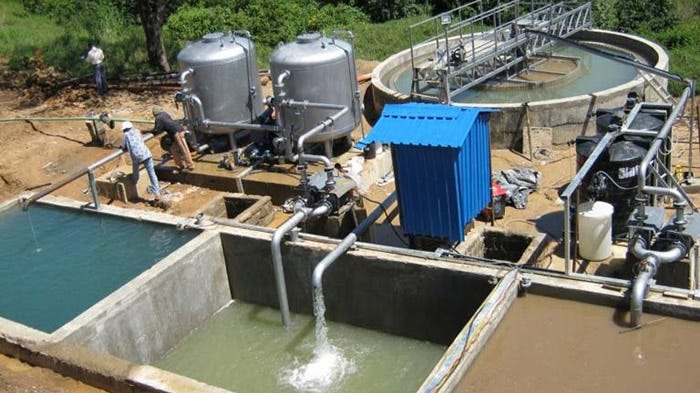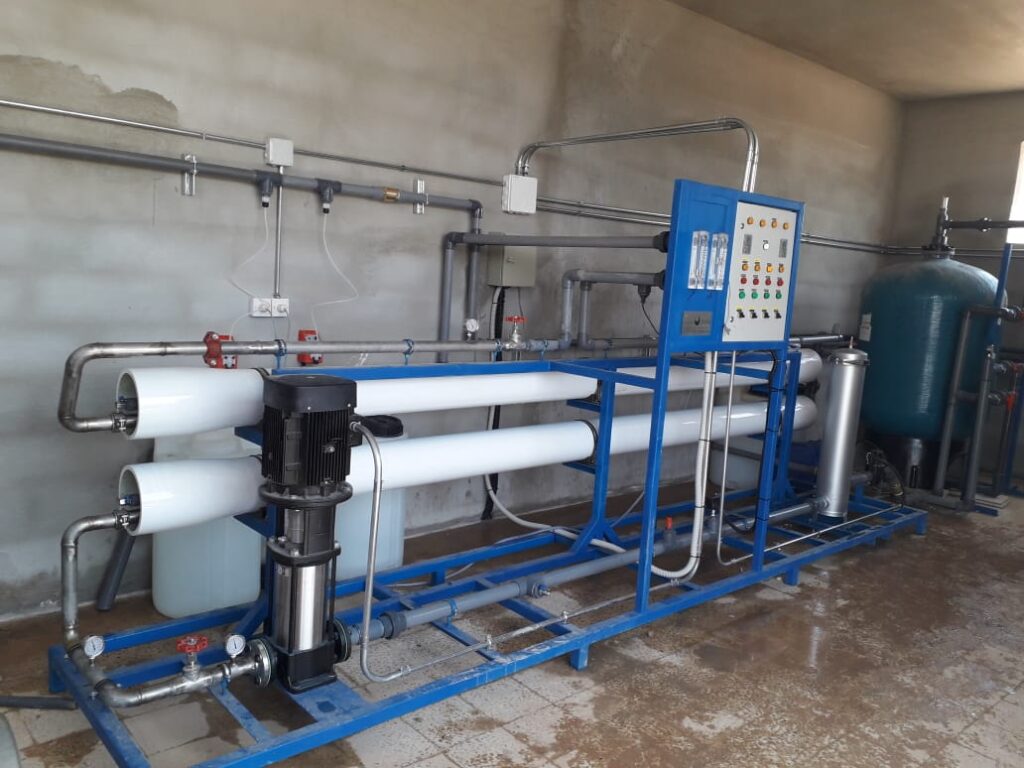Introduction
Hospital sewage refers to sewage generated by hospitals that contains pathogens, heavy metals, disinfectants, organic solvents, acids, alkalis, and radioactive substances. Hospital sewage contains toxic and harmful substances that can induce disease or cause harm, and also have long-term effects on the environment. Therefore, hospital sewage must be effectively treated and meet the standards before it can be discharged.
Main equipment operation management
Different sewage treatment equipment has different operation and operating procedures. Correct operation can keep the equipment in good condition. At the same time, mechanical equipment will inevitably cause damage to parts and components, mismatch, gradual deterioration of technical status, and gradual decline in operating results due to friction, high temperature, moisture, and various chemical effects during long-term operation. Therefore, it is necessary to use it reasonably and do a good job in daily operation management to keep the equipment in good working condition.
The main equipment of the hospital sewage treatment system includes screen decontamination machine, sewage pump, sludge pump, blower, aerator, sludge concentration and dehydration device, disinfection dosing device, pollution source online monitoring equipment, etc. The operation procedures of various equipment need to be determined based on the instructions of the equipment manufacturer and the on-site conditions. Operators must strictly follow the operating procedures and keep operation records during the use of the equipment, including but not limited to:
(1) The use time and opening of the equipment should be reasonably adjusted according to the operation plan and process operation to ensure the treatment effect;
(2) Pay attention to whether the display of various instruments is normal and stable;
(3) Check the mechanical grille daily and clean up the residual debris in time;
(4) Check the blower daily, report any abnormal vibration or abnormal noise in time, and keep records;
(5) Check the sludge concentration and dehydration device daily, clean the equipment, and avoid sludge drying in the equipment and causing blockage;
(6) Check the disinfection dosing device and dosing amount daily to see if they are normal;
(7) Check the pollution source online monitoring equipment daily to see if the numerical display is normal and whether there are debris in the Parshall trough.
Operators and maintenance personnel must undergo technical training and production practice, and pass the assessment before they can take up their posts. The equipment should be started after the start-up preparations are completed. When operating sewage treatment equipment and facilities, operators should wear protective clothing, masks, protective gloves and shoe covers to prevent contact with sewage or sludge splashed during equipment operation.

Inspection and maintenance management
The daily maintenance of hospital sewage treatment equipment should be included in the normal equipment maintenance management of the hospital. According to the sewage treatment process requirements, various equipment should be inspected and maintained regularly, and maintenance regulations should be formulated. Maintenance regulations can be formulated together with operating procedures. Operation management personnel and maintenance personnel should be familiar with the maintenance and repair regulations of electromechanical equipment, including but not limited to:
(1) The structure of the structure and various gate valves, ladders, pipes, brackets and covers should be regularly inspected, repaired and treated with anti-corrosion, and damaged lighting equipment should be replaced in time;
(2) Various equipment and facilities and their accessories should be regularly inspected and replaced according to design requirements or manufacturer’s requirements;
(3) The connections of various pipelines of the equipment should be regularly checked for looseness and water leakage, and the operation of each water pump should be regularly checked for normal operation and whether the temperature is too high after long-term operation. ;
(4) Check the filter regularly for blockage. If blockage is found, clean it in time to prevent blockage of the metering pump and affect the normal operation of the equipment;
(5) Operation and maintenance technicians should regularly check and clean the electrical control cabinet, test its various technical performances, and regularly check the limit switch of the electric gate valve and the manual and electric interlocking devices;
(6) When cleaning the equipment facilities and the surrounding environment, it is strictly forbidden to wipe the operating parts of the equipment, and the flushing water must not splash onto the cable head and the live parts and lubrication parts of the motor;
(7) When inspecting and repairing various mechanical equipment, its coaxiality, static balance or dynamic balance and other technical requirements must be guaranteed.
Sewage treatment equipment wears and ages after long-term use, resulting in increased operating costs. When the equipment reaches the end of its service life, it cannot be repaired for a long time. The old equipment should be updated in time to improve the technical level of the equipment; the management personnel must reasonably determine the time limit for equipment overhaul and timely replace the old sewage treatment equipment.
Monitoring and management
(1) Self-monitoring
Hospital sewage must monitor, record, save and report the water quality in accordance with regulations. The main monitoring indicators are physical and chemical indicators, biological pollution indicators, and biological indicators. The monitoring of physical and chemical indicators is an important means to judge the operation status and treatment effect of the hospital sewage treatment system, and is extremely important to ensure the normal operation of the sewage treatment system and the compliance of the effluent. The main physical and chemical monitoring indicators are temperature, pH value, suspended solids, ammonia nitrogen, dissolved oxygen, biochemical oxygen demand, chemical oxygen demand and residual chlorine. Biological pollution mainly includes bacteria, viruses and parasites. Representative indicator organisms are often used as indicators. Biological indicators mainly refer to coliform groups, and there are also indicator organisms of other organisms (such as Escherichia coli, fecal streptococci, etc.). Water quality sampling should be taken at the end of the sewage treatment process or the outlet of the treatment facility. After the sewage sampling is completed, the utensils and instruments must be disinfected in time.
Monitoring frequency: When using chlorine-containing disinfectants for disinfection, the total residual chlorine should be monitored at least twice a day, fecal coliforms should be monitored no less than once a month, pH value should be monitored no less than twice a day, chemical oxygen demand and suspended solids should be monitored once a week, and other pollutants should be monitored no less than once a quarter.
The main intestinal pathogens monitored are Salmonella and Shigella. The monitoring of Salmonella should be conducted at least once every quarter; the monitoring of Shigella should be conducted at least twice a year.

(2) Online monitoring system for pollution sources
Hospitals can install online monitoring systems for pollution sources according to their own needs to monitor important pollutant indicators in real time. If a hospital is included in the list of key pollutant-discharging units announced by the environmental protection departments at or above the district level, it must install an online monitoring system for pollution sources. The pollution source indicators that need to be monitored are generally chemical oxygen demand, ammonia nitrogen, suspended solids, wastewater flow, pH value, residual chlorine and other parameters, and the hospital must be connected to the competent environmental protection department. The effective data transmission rate must not be less than 95%.
The main equipment of the online monitoring system for pollution sources is precision and valuable equipment. In order to ensure that the online monitoring equipment is intact and to provide pollutant emission monitoring data to the superior competent department in a timely and accurate manner in real time, it is necessary to ensure that there is someone dedicated to operate, maintain and protect the online monitoring equipment. The system must be entrusted to a manufacturer with operation and maintenance qualifications.
The operator shall check the operating status of the online monitoring equipment every day, and follow the whole process of sampling, pretreatment, measurement, and data generation. If any problems are found, they shall be reported to the operation and maintenance unit in a timely manner. Defects that cannot be eliminated immediately shall be recorded in detail and reported in a timely manner, and the competent department shall organize their elimination.
The management personnel shall carefully check the technical report of the operation and maintenance unit for each service to confirm whether the work content of the operation and maintenance personnel is true and in place. The operation and maintenance technical report delivered to the user by the operation and maintenance unit shall be carefully kept for easy reference.
Why Choose Us?

CNMEDITECH is dedicated to the long-term research of the medical consumables market. Our mission is “People oriented and win-win strategy,Matching the real needs of the region with a focus on human health,To be the world’s first-class medical field solution expert”. We have been manufacturing high-quality medical device products for more than ten years.
We have built our reputation on delivering quality healthcare solutions on time and on budget. All our products comply with international health and safety regulations and all products come with a warranty.
Are you still worrying about your customer’s product needs? Are you still angry that the product is expensive?Our medical consumables support personalized product customization.
Our company has many styles to choose from. In addition, we have high-quality pre-sales consulting guidance and professional after-sales service, all to meet your needs.
Whether it is a cost-effective or high-end product, there will always be something suitable for you. If you have any needs for products, you can ask us, our factory will meet your needs as soon as possible, and we will make every effort to provide you with solutions.Feel free to send us your inquiries.








